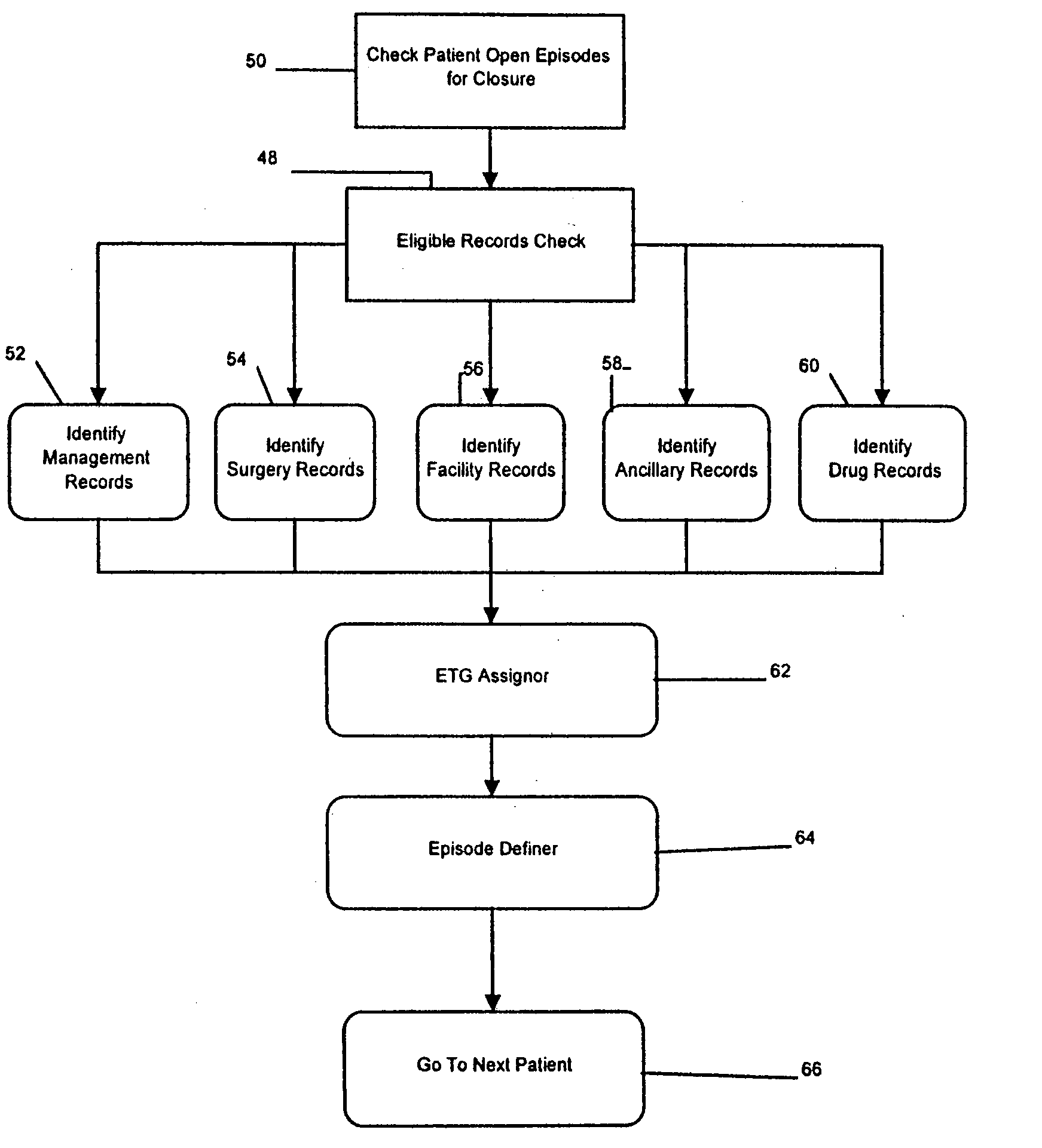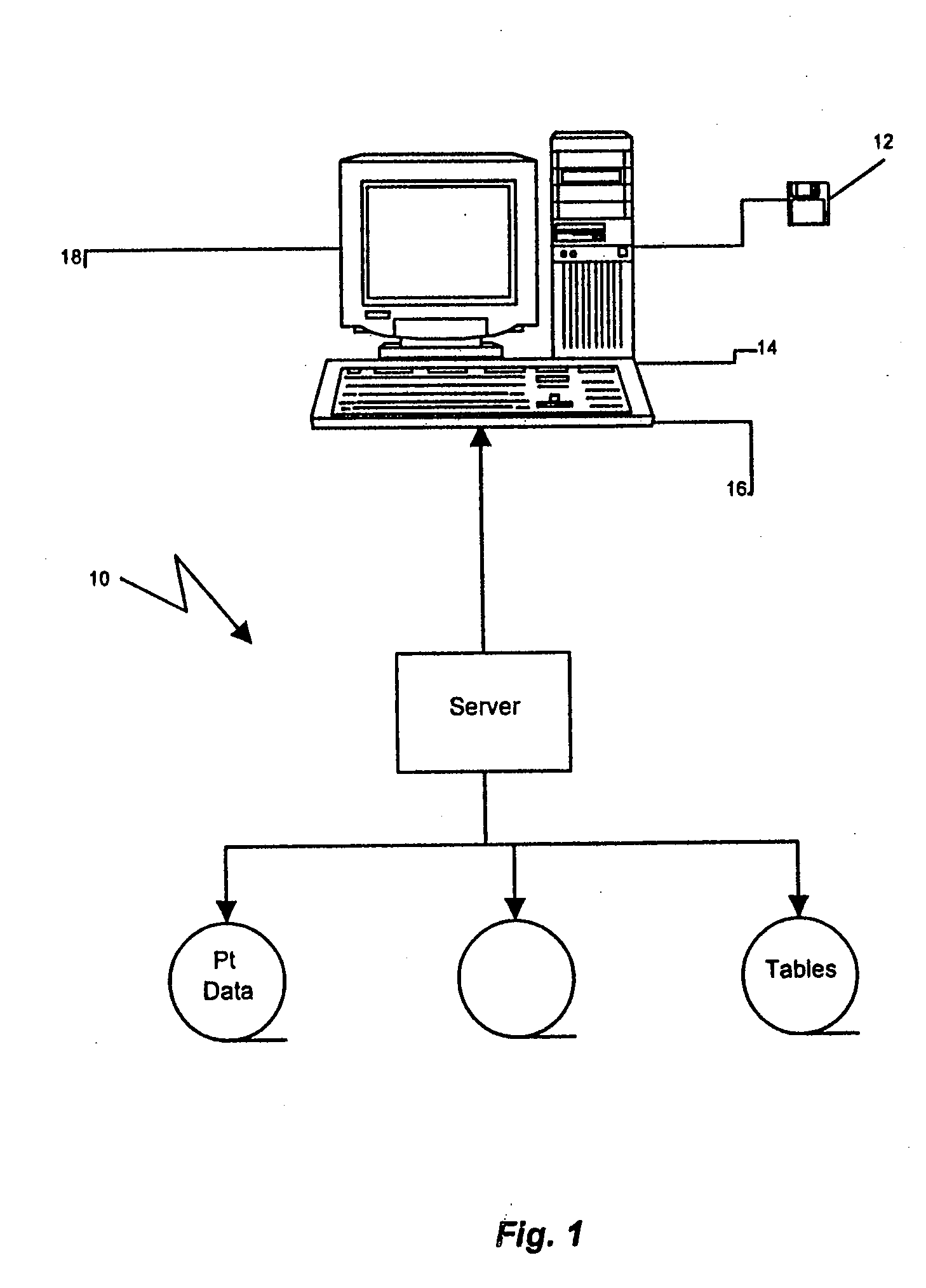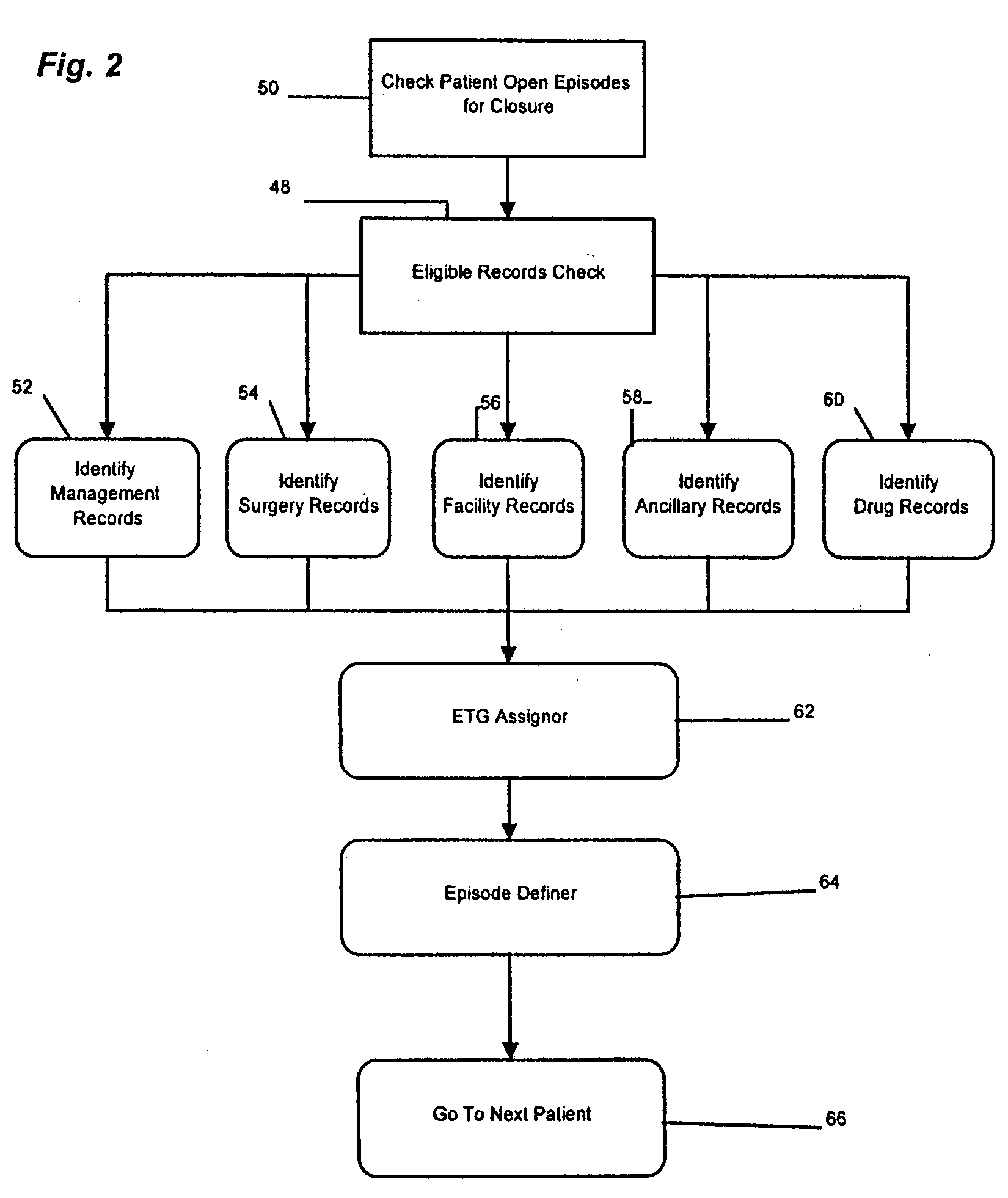Episode treatment groups of correlated medical claims
a medical claim and treatment group technology, applied in the field of computer-implemented methods for processing medical claim information, can solve the problems of insufficient payment methods for correcting inconsistencies in health care systems, inability of clinicians and administrators to efficiently utilize data, and inability to adjust existing systems for casemix, concurrent conditions or recurrent conditions
- Summary
- Abstract
- Description
- Claims
- Application Information
AI Technical Summary
Benefits of technology
Problems solved by technology
Method used
Image
Examples
example
[0155]FIG. 10 provides an example of Management and Ancillary record clustering over a hypothetical time line for a single patient over a one year period from January, 1995 to December, 1995. FIG. 10 depicts time frames of occurrences for claims classified as management records, i.e., office visit 84, hospital or emergency room visit 85, and surgery and surgical follow-up 86 and for claims records classified as ancillary records, i.e., laboratory tests 87, X-ray and laboratory tests 88 and x-ray 89. Two time lines are provided. A first timeline 71 includes the diagnosis and the time duration of the diagnosed clinical condition. A second timeline 72 includes the claim events which gave rise to the medical claims. Where claim events occur more than once, an alphabetic designator is added to the reference numeral to denote chronological order of the event. For example, the first office visit is denoted 84a, the second office visit is denoted 84b, the third denoted 84c, etc. Vertical br...
PUM
 Login to View More
Login to View More Abstract
Description
Claims
Application Information
 Login to View More
Login to View More - R&D
- Intellectual Property
- Life Sciences
- Materials
- Tech Scout
- Unparalleled Data Quality
- Higher Quality Content
- 60% Fewer Hallucinations
Browse by: Latest US Patents, China's latest patents, Technical Efficacy Thesaurus, Application Domain, Technology Topic, Popular Technical Reports.
© 2025 PatSnap. All rights reserved.Legal|Privacy policy|Modern Slavery Act Transparency Statement|Sitemap|About US| Contact US: help@patsnap.com



